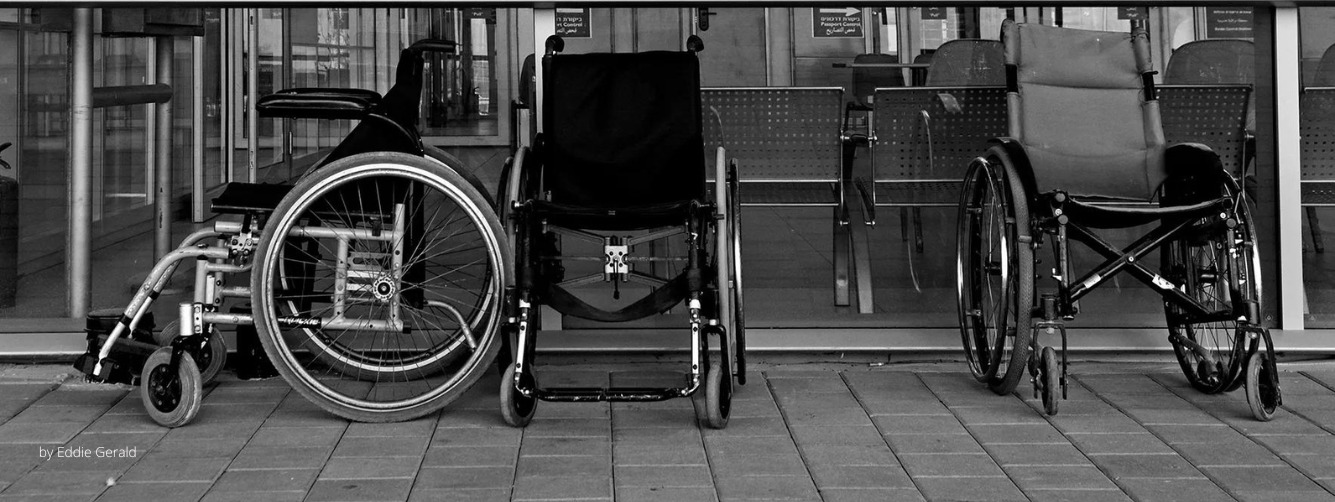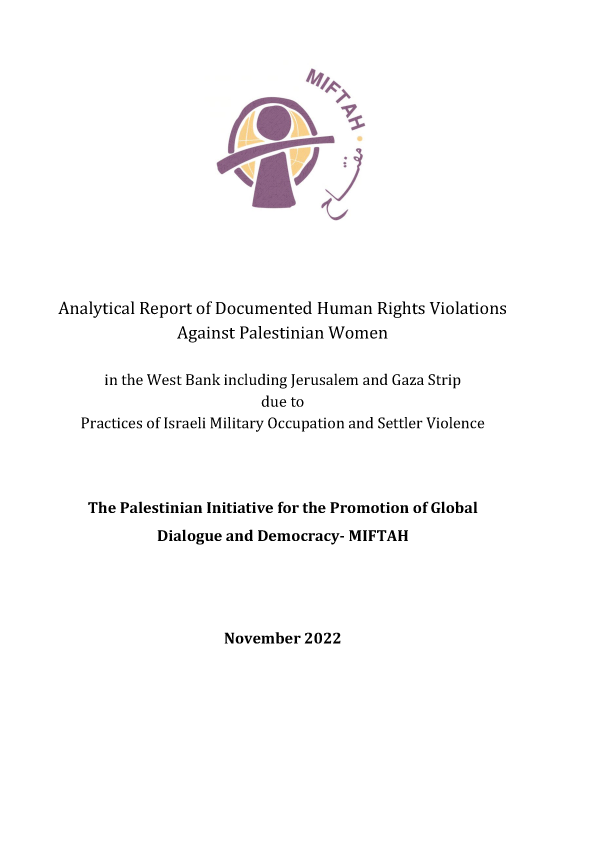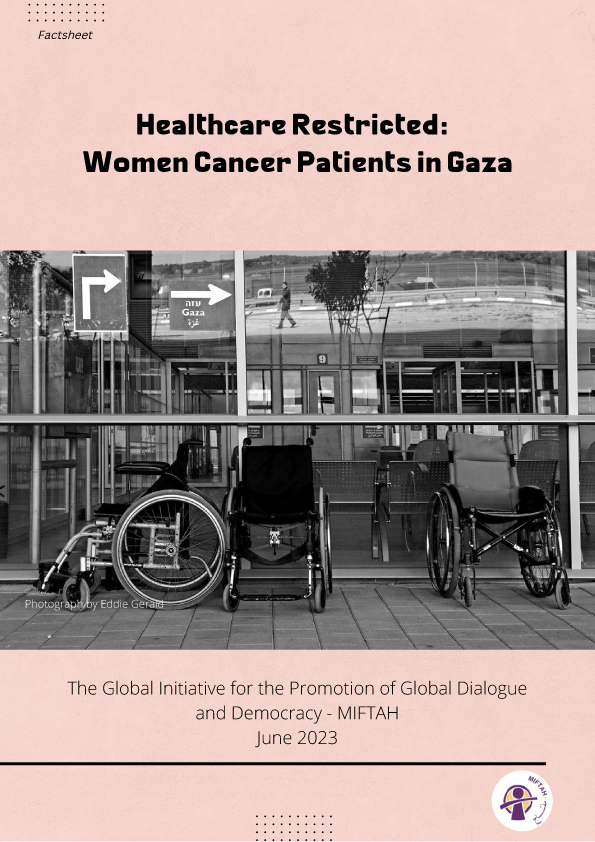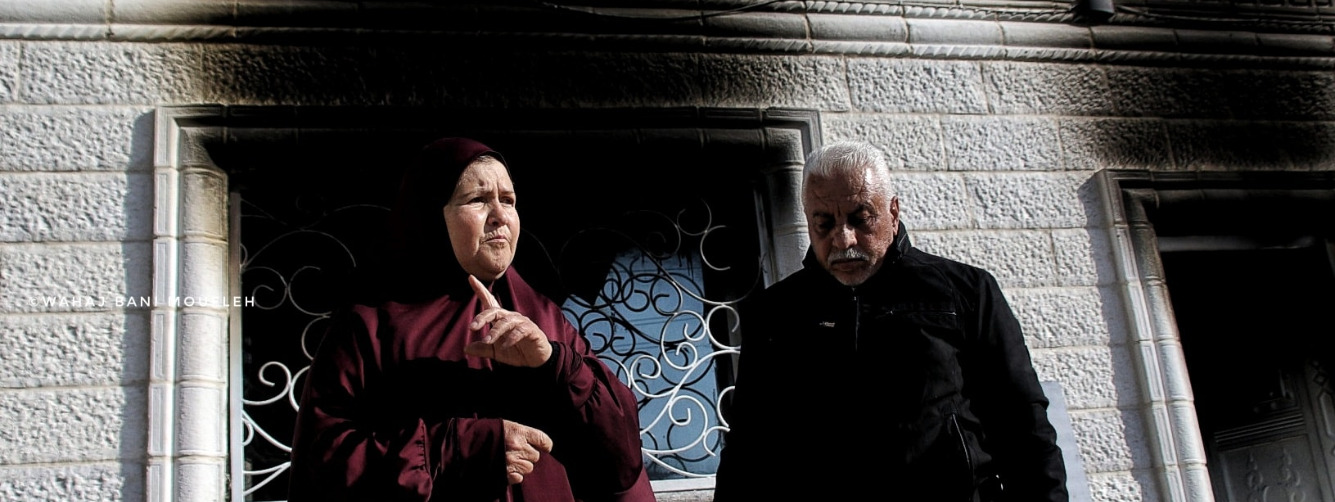Although the colonization of the Gaza Strip has now to an end (with the evacuation of the settlers), Israel’s military occupation of the Gaza Strip and the West Bank (including East Jerusalem) continues. Israel strictly controls all access in and out of the Occupied Gaza Strip thereby controlling the movement of both goods and people. And, while the Israeli Army may soon evacuate the Gaza Strip, the Army will continue to strictly control all Palestinian movement. Below is an update on the status of coordination with Israel.
Rafah Crossing Point
Background: The Rafah crossing point is the only Palestinian access point into Egypt. Although the crossing point is situated more than 6 kilometers away from the border with Israel, Israel maintains complete control over Palestinian movement (both people and goods) at this and every other entry and exit point. Under Israeli orders, an estimated 700 Palestinians per day are allowed to leave the Gaza Strip (to Egypt) and the vast majority of Palestinians in Gaza are denied the ability to travel. (An estimated 90 percent of Palestinians in Gaza are routinely denied the ability to travel and Israel currently imposes travel restrictions on Palestinian males aged 16 to 35).
While Israel claims that it is “disengaging” from the Occupied Gaza Strip, it wishes to continue to control the movement of Palestinians in and out of the Occupied Gaza Strip, while removing its presence from the Rafah crossing point and the Philadelphi belt. Accordingly, Israel seeks to move the Rafah crossing point to Kerem Shalom – inside Israel located at the southeast corner of the Gaza Strip, bordering both Egypt and Israel – where it can control all Palestinian movement.
Palestinian Position: Palestinians should be granted complete freedom of movement, without interference by Israel. Accordingly, Palestinians are opposed to the movement of the crossing point to Kerem Shalom as this only serves to cement Israeli control over Palestinians. If Israel truly seeks to “disengage” from the Gaza Strip, it should cease its control over the Occupied Gaza Strip.
Status: Israel continues to insist on the movement of the crossing point to Kerem Shalom despite Palestinian and Egyptian objections to the contrary.
Customs Envelope
Background: The Palestinian Authority and Israel currently maintain a customs arrangement regulating the movement of goods. The Paris Protocol, signed in 1994 and ratified in 1995, created one “customs envelope” in Israel and Occupied Palestinian Territory (“OPT”), whereby goods entering into the envelope are taxed only once and goods within the envelope are not taxed. For example, goods entering the Gaza Strip from Egypt are taxed upon entry but if transported to Israel or to the West Bank are not taxed again. The Paris Protocol also specified which goods could be imported into OPT. Owing to Israel’s control over all border crossings, Israel has maintained control over the Palestinian economy: Palestinian goods are often detained for weeks or months at Israeli crossing points and Israel denies the free import of goods (including those included in the Paris Protocol). Furthermore, Palestinian businesspeople have often resorted to using Israeli intermediaries to import and export goods. Accordingly, tariffs that would normally go to the Palestinian Authority go to Israel via the Israeli intermediary. Nonetheless, the Palestinian economy can immediately benefit from the Protocol’s proper implementation: if Palestinian goods are allowed to move freely and if the Palestinian Authority receives the tariffs that are withheld by Israel international trade could be improved.
Israel wants to move the crossing point to Kerem Shalom. It wants to maintain Israeli customs officers there to ensure that only specified goods are imported into Gaza and thereby control the Palestinian economy. Otherwise, it has threatened to cancel the customs envelope.
Palestinian Position: The movement of the Rafah crossing point to Kerem Shalom will ensure Gaza’s continued dependence on Israel, as Israel would continue to control Gaza’s access to and from Egypt and also continue economic control over the area. Furthermore, the movement of the border crossing to Kerem Shalom is not logical: if Israeli customs officials are present in Kerem Shalom, it casts doubt on Israel’s claim that it will allow the Palestinians to freely operate a seaport, for Israeli official will also need to be present at the seaport, situated well within OPT. Therefore, if Israel wishes to maintain the customs union, it welcomes a third party to ensure smooth functioning and transfer of the Rafah crossing point to Palestinian control post evacuation and to monitor customs arrangements. This move would represent an important step towards Gaza’s successful economic recovery following 38 years of Israeli de-development. For more information on the Gazan economy see: Sara Roy, The Gaza Strip: The Political Economy of De-Development (1995)
Status: Israel has not yet agreed to the presence of a third party to monitor customs and continues to insist on the movement of the crossing point to Kerem Shalom.
Palestinian Airport
Background: The Palestinian International Airport was opened in 1998 by Presidents Clinton and Arafat and serviced Palestinians seeking to fly in and out of the Occupied Gaza Strip. The airport operated under the strict control of Israel. In 2000, the Israeli Army closed the airport and several months later destroyed the runway and control tower, with estimated damages exceeding more than USD $8 million. It has remained closed.
Palestinian Position: The Palestinian Authority seeks to rebuild the airport immediately at an estimated cost of USD $26 million. Following the evacuation of the Israeli Army, the Palestinian Authority seeks to open the airport.
Status: Israel has indicated that it will allow the Palestinian Authority to rebuild the airport after its evacuation but it has not yet provided answers as to whether it will allow the Palestinian Authority to operate the airport following the evacuation. Under the terms of the “Disengagement Plan” Israel will retain complete control over Palestinian airspace.
Movement of Goods within the OPT and between the OPT and Israel
Background: Currently, Israel exercises complete control over the Palestinian economy by controlling the movement of Palestinians and their goods. In the Occupied West Bank, for example, Israel maintains hundreds of checkpoints and barriers designed to fragment Palestinian communities. Palestinian goods are subject to a “back-to-back” system of movement, wherein Palestinian goods are unloaded and reloaded onto different trucks several times before reaching their final destination. For example, goods originating from Hebron (in the Occupied West Bank) destined for Nablus (also in the Occupied West Bank) must be unloaded and reloaded an estimated seven times. Obviously this increases transportation costs and the time for which goods reach their destination.
Furthermore, Israel does not maintain systematized rules or procedures for the movement of Palestinian goods, thereby increasing risk and uncertainty among investors. In the Karni terminal (the sole terminal for the movement of Palestinian goods from the Occupied Gaza Strip), rules for the movement of goods are frequently changed by the Israelis. Today, a mere 50 trucks per day of Palestinian goods are allowed to leave the terminal, owing to the onerous and unpredictable searches. Israeli goods, which do not have to go through any security procedures, are shipped in daily on more than 300 trucks. Accordingly, Israeli goods are often less expensive to Palestinians and therefore the Palestinians remain a captive market to the Palestinians.
Palestinian Position: Israel can easily improve the economy by simply removing its barriers and checkpoints and by allowing Palestinian goods to move based on international principles of “door-to-door” wherein Palestinian goods are freely allowed to move without onerous security searches that are not imposed on Israeli goods. By creating certainty among investors, the economy of the Gaza Strip can be revitalized and improved. The World Bank is in agreement with this conclusion: “Palestinian economic recovery depends on a radical easing of internal closures throughout the West Bank [and Gaza] the opening of Palestinian external borders to commodity trade, and sustaining a reasonable flow of Palestinian labor into Israel.” See Disengagement, The Palestinian Economy and the Settlements”, the World Bank, June 15, 2004.
Status: Israeli Minister of Defense, Mofaz, agreed on the “door-to-door” system of movement of goods in the presence of Quartet Special Envoy James Wolfensohn but in later technical discussion expressed that it is impossible to implement as Israel has put forward such high security specifications for any scanner that would be used at crossing points – so high that not a single scanner in the world exists that meets these specifications. International experts do not support the Israeli position.
Seaport
Background: In 1999, in the Sharm el-Sheikh Agreement between the PLO and Israel, it was agreed that a seaport would be opened in Gaza for exclusive Palestinian use. In July 2000, construction began on the seaport but this construction was unilaterally halted by Israel in October 2000, as Israel refused to facilitate the movement of needed construction materials. The seaport will take an estimated 2 years to build. Under the terms of the “Disengagement Plan” Israel will continue to control Palestinian territorial waters.
Palestinian Position: The Palestinian Authority seeks to build and operate the seaport in order to improve the Palestinian economy and reduce reliance upon Israel’s ports.
Status: While Israel has agreed to the construction of the seaport, it has not yet provided details as to how it will facilitate the construction of the port, as the materials need to be brought into the Gaza Strip from the West Bank and elsewhere. Israel has also failed to sign a letter to the donor community indicating that it is willing to facilitate the construction of the airport. This letter is needed in order to secure donor funds to assist in the construction of the seaport.
Safe Passage and Freedom of Movement
Background: Currently, Palestinians require Israeli permits to travel: (1) within the Occupied West Bank; (2) between the Occupied West Bank and the Occupied Gaza Strip and (3) to Israel. Palestinians in the Gaza Strip also require Israeli permission to cross international boundaries to visit other countries. Such permits are granted rarely (less than 30 percent of the Palestinian population receives such permits) and in the Occupied Gaza Strip, approximately 90 percent of the Palestinian population are denied the ability to travel.
Under the Oslo Agreements, Israel was supposed to have instituted a “safe passage” between the Occupied West Bank and Gaza Strip to ensure freedom of movement for Palestinians within Occupied Palestinian Territory. Passage through the “safe passage” remained subject to strict Israeli control and in 2000 Israel closed the safe passage route thereby isolating the Occupied Gaza Strip from the rest of Occupied Palestinian Territory.
Palestinian Position: In order to ensure that Palestinians are not enclosed in a large prison, freedom of movement must be guaranteed. Yet, while Israel asserts that it wants to “disengage” from the Occupied Gaza Strip, it wants to retain control over Palestinians (and hence their economy) by denying freedom of movement. Israel also seeks to ensure that the Gaza Strip is cut off from the rest of Occupied Palestinian Territory.
Status: Israel has yet to respond to whether freedom of movement for Palestinians will be guaranteed: whether Palestinians will be able to travel to the rest of Occupied Palestinian Territory; whether Palestinians will continue to require Israeli permission to leave the Gaza Strip and whether Palestinians will be able to freely travel throughout the Occupied West Bank. While many discussions have taken place on the mode for transportation (sunken road, railroad, convoy), these discussions remain inconclusive.
Status of Area to be Evacuated
Background: Under the Oslo Agreements, Israel divided the Occupied West Bank into three areas:
- Area A – This area consists of approximately 17.2% of the Occupied West Bank, divided into 13 separate, non-contiguous areas. The Palestinian Authority has responsibility for internal security and has wide civil powers.
- Area B – The area consists of 23.8% of the West Bank. The Palestinian Authority has civil control over the area, but overall security control rests with Israel. For all practical purposes, since September 2000, Area B has functionally ceased to exist and has been under full Israeli control.
- Area C – This area consists of 59% of the Occupied West Bank. Israel has full security and civil responsibility over these areas. This is the only contiguous area in the Occupied West Bank; it surrounds and divides Areas A and B. This area is primarily situated around the Israeli colonies of the West Bank. The colonies themselves are not subject to the classification of Area A, B or C.
Palestinian Position: Given that Israel has dismantled four colonies in the Occupied West Bank, there, the evacuated areas surrounding the colonies should become “Area A” and therefore fall within the complete control of the Palestinian Authority.
Status: Israel wants keep the area under full Israeli control – “Area C” and will only allow access to the area with “coordination.” Accordingly, the Israeli Army will remain present in the area, thereby denying Palestinians freedom of movement in the area. In other words, Israel will maintain complete control over the area.
For additional information, please contact:
Diana Buttu +972-599-604-657








